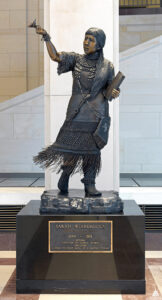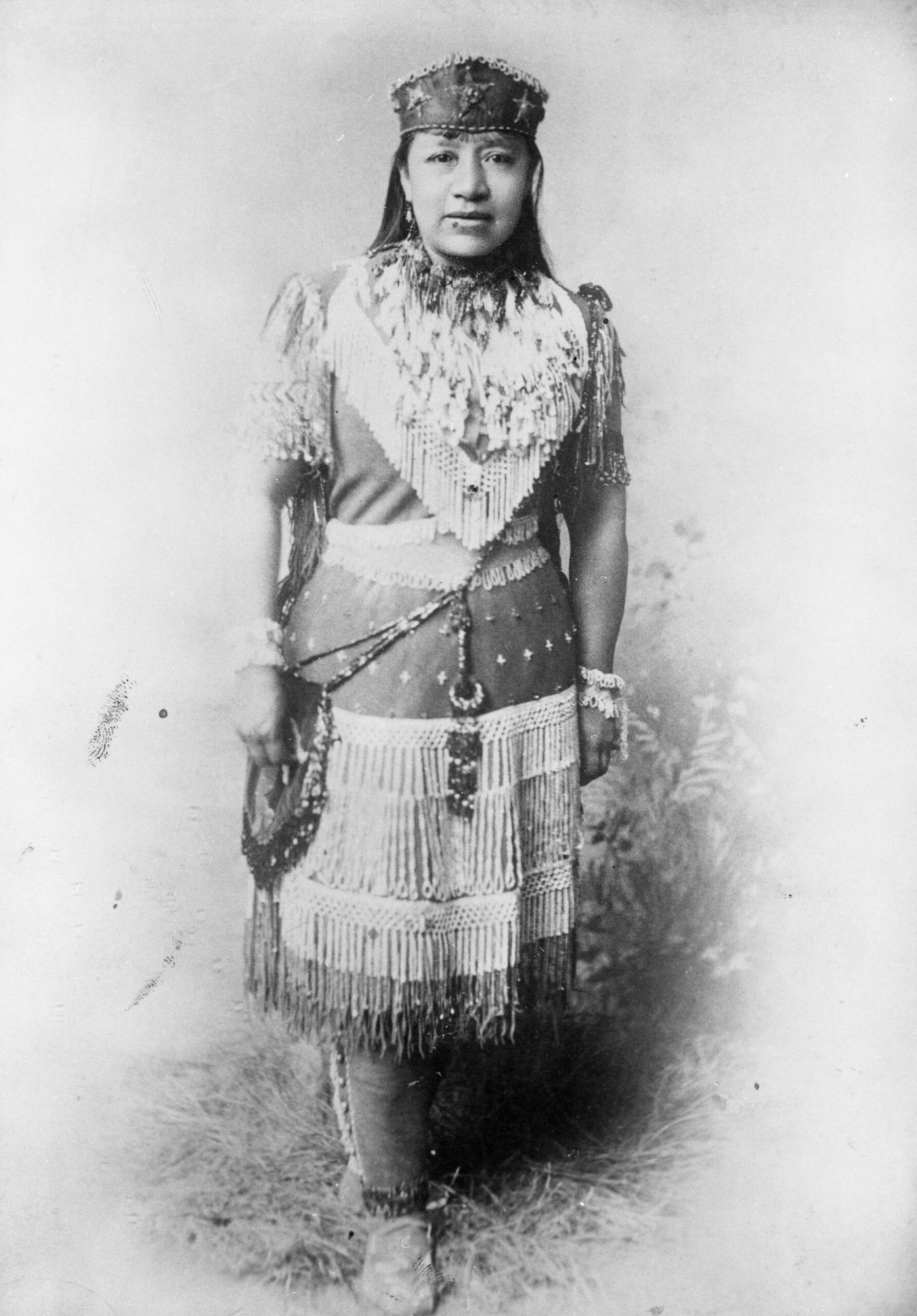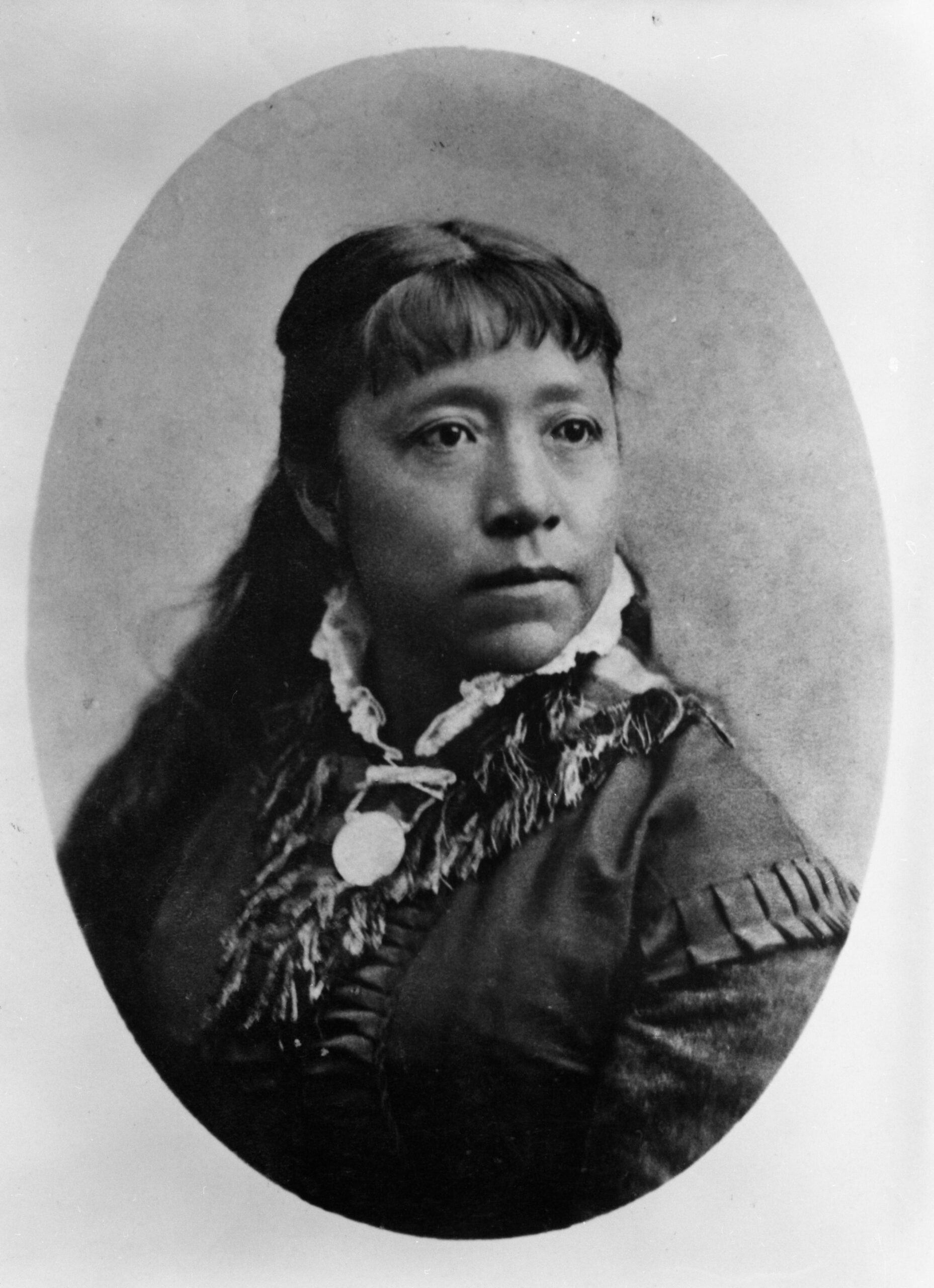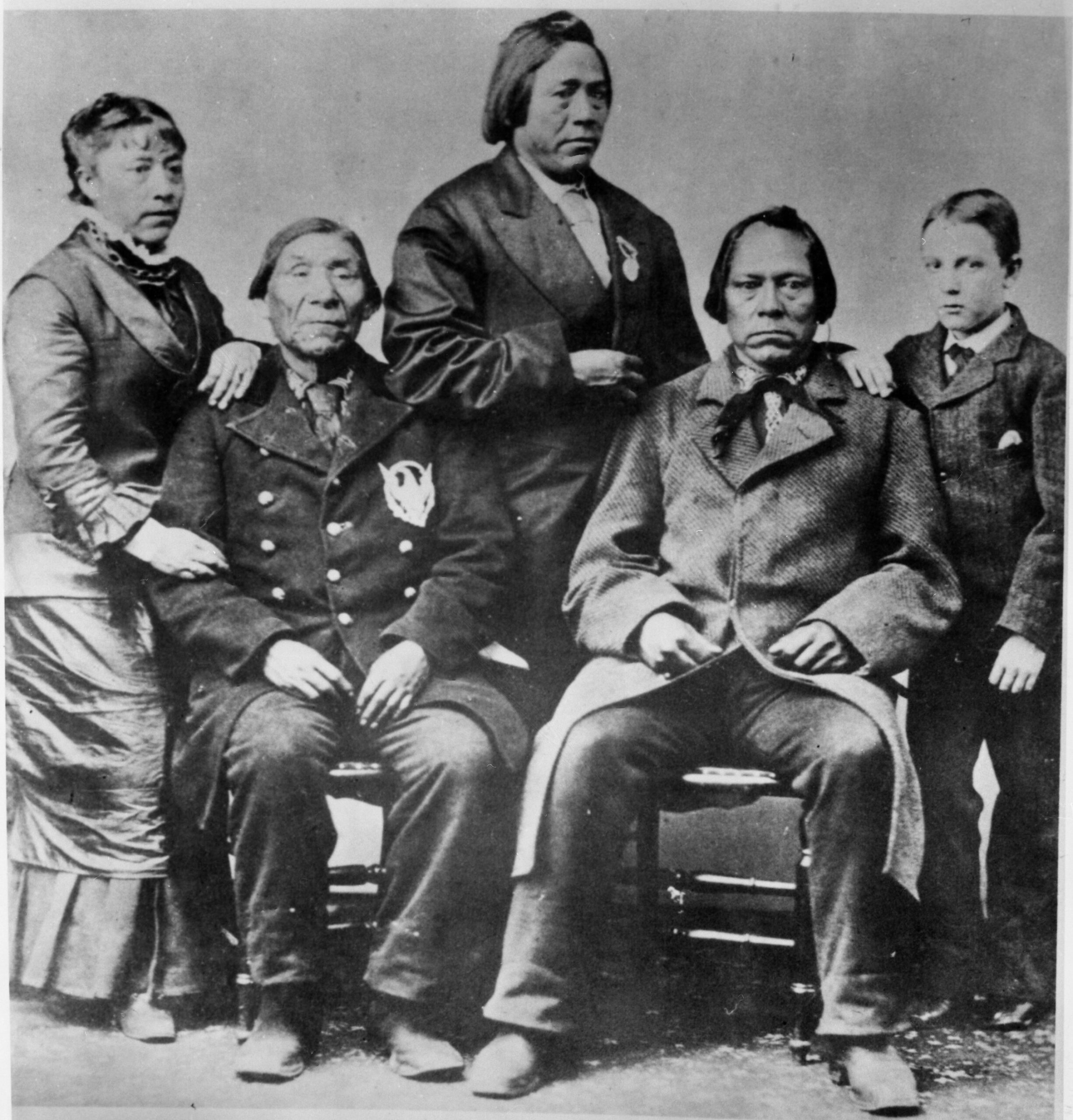Sarah Winnemucca

Bronze statue of Sarah Winnemucca in the U.S. Capitol in Washington D.C.
Sarah Winnemucca was born around 1844 in what is now Nevada, to Chief Winnemucca of the Paiutes. Her grandfather was Chief Truckee, leader of the Paiute nation, and he influenced her early upbringing and education. By the time she was 14, she spoke five languages, three Native American dialects, English and Spanish. These skills would serve her well as she served as an interpreter and negotiator, spending her adult life dedicated to creating cultural understanding between the Native Americans and the white men. She gave over 300 speeches defending the rights of the Paiutes to win support for them.
In January 1880, she pleaded the Native American’s cause in Washington, D.C. before Secretary of the Interior Carl Schurz and President Rutherford B. Hayes. A remarkable achievement for that time.
Not all went smoothly, though, broken promises caused mistrust, but Sarah strived to achieve understanding on both sides to the end. Her book “Life Among the Piutes; Their Wrongs and Claims” published in 1883, was the first English language book written by a Native American woman.
Sarah was married to Lt. L. H. Hopkins and Lt. E. C. Bartlett and an unidentified Native American husband.
Her Paiute name was Thocmetony (or Tocmetoni), which means “shellflower”; it is not known why or when she took the name Sarah, but this was the inspiration for the bronze statue of her made by artist Benjamin Victor that resides in the visitors center of the U.S. Capitol in Washington D.C. today.

Sarah Winnemucca in Native American Paiute dress

Portrait of Sarah Winnemucca in Native American Paiute dress

Winnemucca family